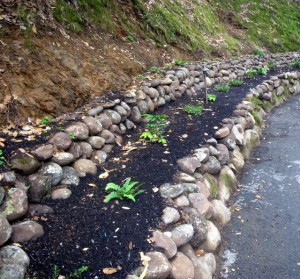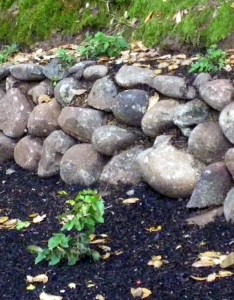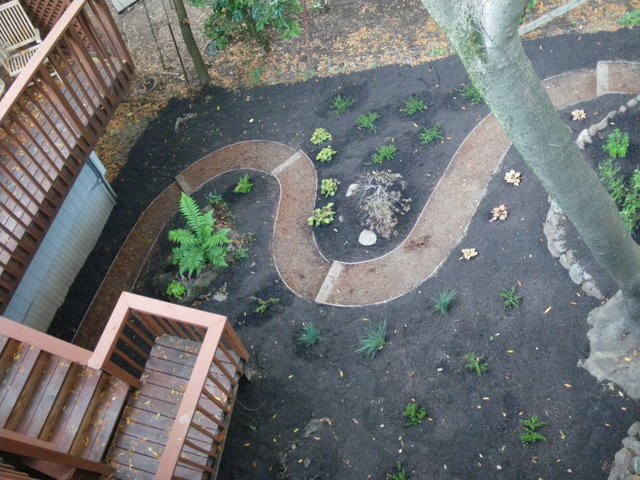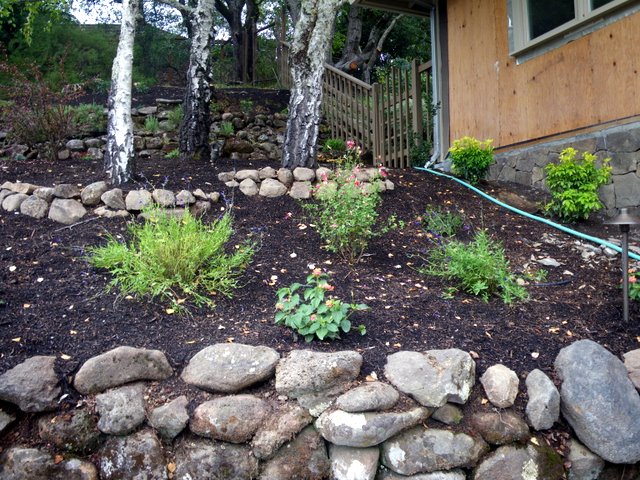Erosion of hillsides can range from minor movement that is easy to repair, to major and dangerous situations.
Caveat! Caveat! Caveat!
If you think you have a major problem, please refer to a professional soil engineer or contractor to help you. In this post, I am only going to address simple erosion problems.
Building low stone retaining walls can be simple and effective for keeping hillsides from eroding.
These walls were built without mortar in a method called drystack. Only soil was used to hold them in place. Cutting back into the hillside, laying the stone, back filling with soil and then planting keeps the base of the wall stable.
Loose soil will collect in the beds at the bottom of the hill.
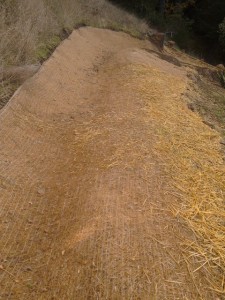
The swale is covered with a biodegradable erosion blanket and sowed with clover and wildflower seeds
When assessing your slope for erosion problems look for these signs:
- Channels already formed in the hillside from runoff
- Bare soil that is exposed to rain or water runoff
- Downspouts or other water sources
Ways to minimize water damage include:
- Create swales that are on the contour of your slope
- Build retaining walls that have drainage in them
- Sow seed and plant fast growing shrubs to cover bare soil
- Mulch, mulch, mulch
In the photo above I planted a native strawberry that sends out many runners and roots into the hillside. It will cover the hill very quickly. Other California native plants that provide excellent cover are creeping Ceanothus, trailing Manzanita and Sonoma Sage and Coastal Sage Brush.
The most important action for you to take in your garden is OBSERVATION. Go out in the rain and storms and watch how the water flows. This is the best way to learn about your garden and the only way to really know what is happening.

